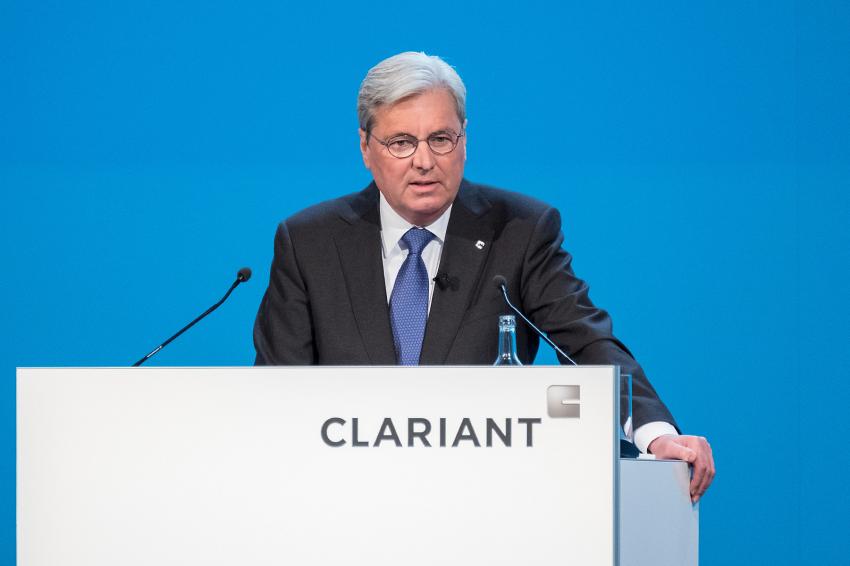Clariant Could Divest 25% of Portfolio in Merger
28.07.2017 -
Clariant may be willing to divest 25% of its portfolio, including its Pigments and Masterbatches businesses, following the planned $20 billion merger with US family-owned chemical producer Huntsman.
"We've always said that we could part from these items when the time is right," the Swiss group’s CEO Harriolf Kottmann told journalists attending the semi-annual results presentation in Zurich on July 27.
The masterbatch business is a legacy of now defunct German chemical producer Hoechst, which spun off some of its specialty chemicals assets into Clariant after the original merger of Swiss players Ciba and Sandoz in 1996. The pigments activities were a specialty of Ciba.
Even before the latest transatlantic fusion plan was hatched, investors had been pushing Clariant to divest the plastics-related businesses.
On Jul. 4, US hedge funds Corvex and 40 North announced they had acquired a combined 7.2% stake in the Swiss group through their joint acquisition vehicle White Tale Holdings and hoped to leverage the holding to torpedo the merger. In the meantime, White Tale has widened its stake to 10 %.
Both funds have been critical of the merger’s prospects. A spokesperson for White Tale said the combination lacks strategic rationale and undercuts Clariant's strategy of becoming a pure-play specialty chemicals company. No demands have been placed openly on the table thus far.
In Zurich, Kottmann sought to play down the derailment threat, insisting that Clariant's 20 largest shareholders, with the exception of White Tale, do not oppose the proposed union. "We've spoken to our top 20 investors – who represent more than 50% of our share capital – multiple times," Kottmann said in an interview with the news agency Reuters. "We didn't experience a single investor who rejected the deal."
There is no “plan B” as an alternative to the combination with Huntsman, the CEO told Dow Jones Newswires.
In a joint ad hoc statement on Jul. 27, Clariant and Huntsman said the merger is on track to close late this year or early next year, despite criticism from the activist side. They said the project team is “progressing very well” in terms of joint synergy implementation and is confident of meeting the synergy target of more than $400m as well as the $25m tax-saving target.
Additionally, the potential partners said they have submitted key regulatory filings, including in the US, EU and China. In the US, and have also submitted a preliminary filing to the Committee on Foreign Investment in the United States (CFIUS), which will review the deal with an eye to US national security interests.
The portfolio management principles and capital allocation plans of the new joint company are fully aligned, the statement continues, while stressing that “there is a clear joint understanding of the combined company's future core segments, and the direct majority of investments will be directed to growth areas and growth regions.”
Prospects for enhancing the current downstream presence are to focus on expanding formulation- and application-based segment niches as well as high-end composites, bespoke polyurethane (PU) systems and customer-oriented and co-developed products.
The existing presence in markets for isocyanates and petrochemical building blocks such as ethylene oxide (EO) and propylene oxide (PO) is projected to be further advanced downstream in urethane systems as well as surfactants.
Lending credence to Kottmann’s remarks about shedding assets, the paper says the portfolio will be simplified, with complexity reduced, while utilizing significant strategic flexibility to consider value creating add-on acquisitions and divestments. The Plastics & Coatings and Textile Effects will be managed for cash and turnaround while all other businesses will be managed for growth and margins.





